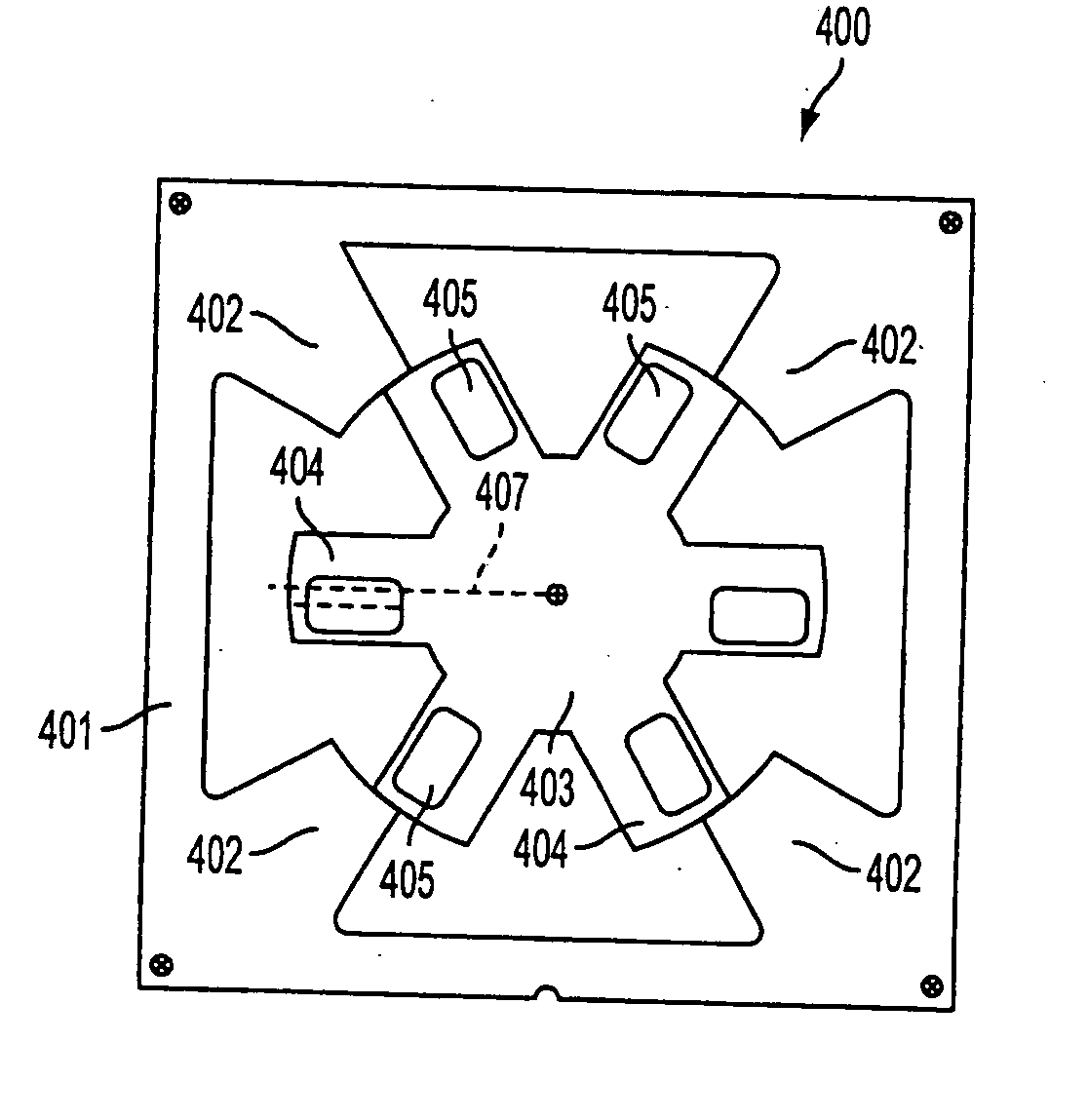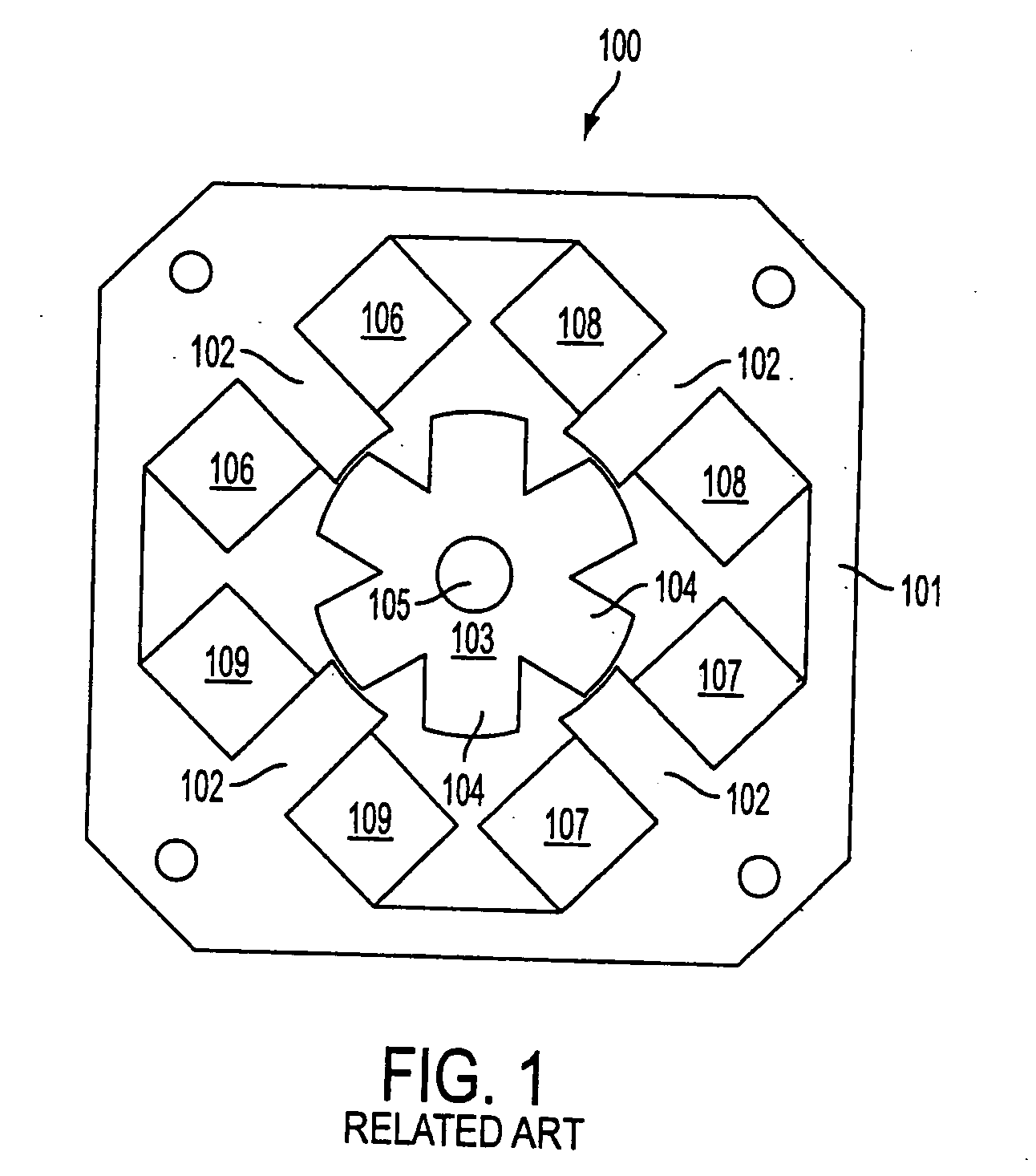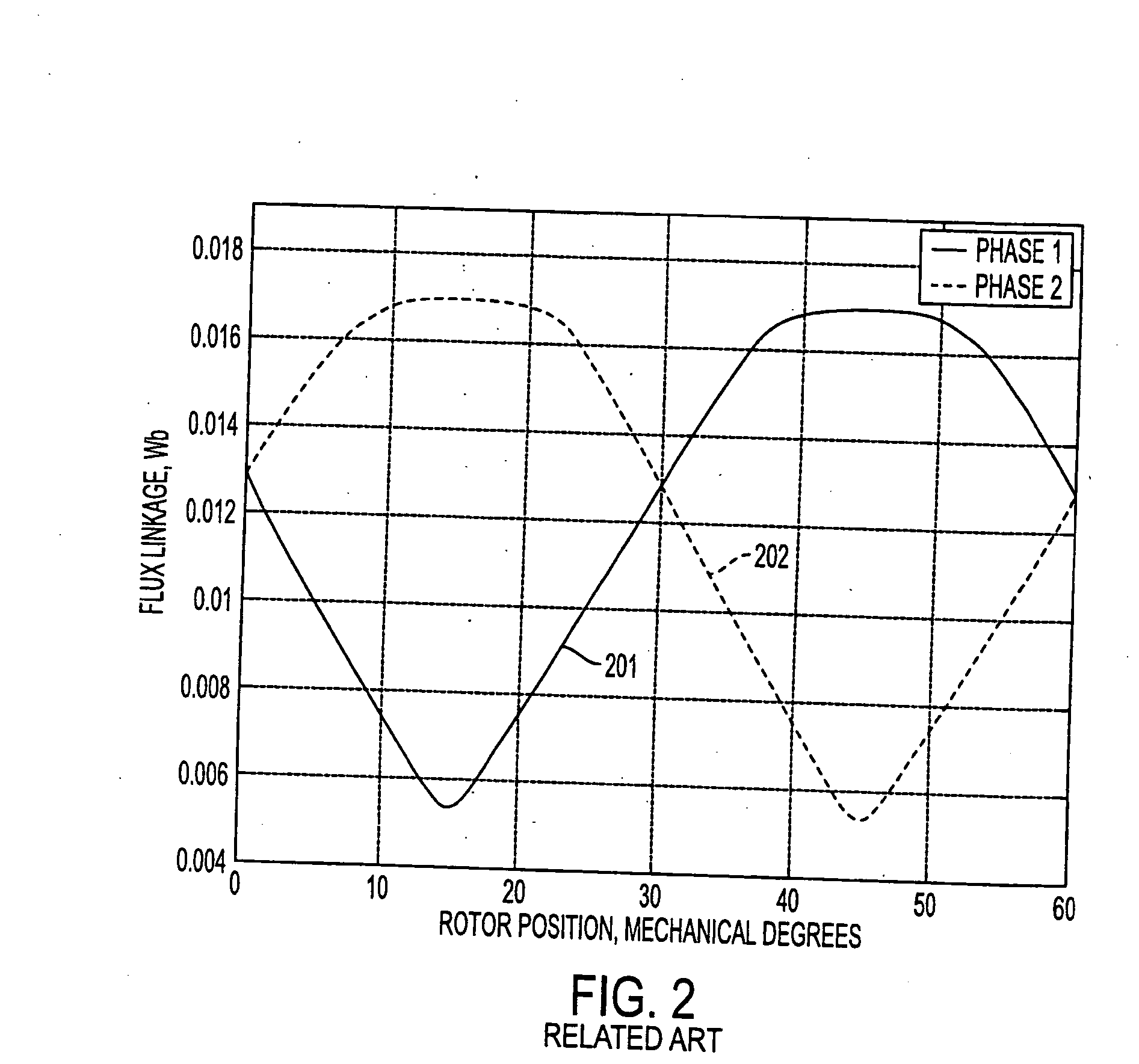PMBDCM and two phase SRM motor, two phase SRM rotor and stator, and coil wrap for PMBDCM and SRM motors
a two-phase srm motor and srm rotor technology, applied in the direction of synchronous motors, magnetic circuit shapes/forms/construction, windings, etc., can solve the problems of low torque density, nonlinear relationship, and inability of tpsrm b>100/b> to self-start in both directions of rotation, so as to reduce vibration, improve tpsrm reliability, and reduce acoustic noise
- Summary
- Abstract
- Description
- Claims
- Application Information
AI Technical Summary
Benefits of technology
Problems solved by technology
Method used
Image
Examples
Embodiment Construction
[0089] A first embodiment of the invention is drawn toward providing an electromagnetic torque for all rotor positions of a two-phase switched reluctance machine (TPSRM), without affecting the uniform air gap between the stator and rotor poles during their alignment and without increasing the rotor pole arc. Instead, an equivalent phase displacement of flux linkages can be achieved by providing a slot (i.e., hole) in the rotor poles. The slot can have a variety of shapes.
[0090]FIG. 4 illustrates a TPSRM having off-center slots in its rotor poles. A TPSRM 400 has a stator 401 with four salient stator poles 402 and a rotor 403 with six salient rotor poles 404. Each rotor pole 404 has a rotor pole slot 405 that is offset from a central radial axis 407 of the respective rotor pole 404 to provide a preferred path for the flux to flow between stator 401 and rotor 403. Making the rotor pole slot axis uneven toward one side reduces the flow of flux on that side by increasing the air gap re...
PUM
 Login to View More
Login to View More Abstract
Description
Claims
Application Information
 Login to View More
Login to View More - R&D
- Intellectual Property
- Life Sciences
- Materials
- Tech Scout
- Unparalleled Data Quality
- Higher Quality Content
- 60% Fewer Hallucinations
Browse by: Latest US Patents, China's latest patents, Technical Efficacy Thesaurus, Application Domain, Technology Topic, Popular Technical Reports.
© 2025 PatSnap. All rights reserved.Legal|Privacy policy|Modern Slavery Act Transparency Statement|Sitemap|About US| Contact US: help@patsnap.com



